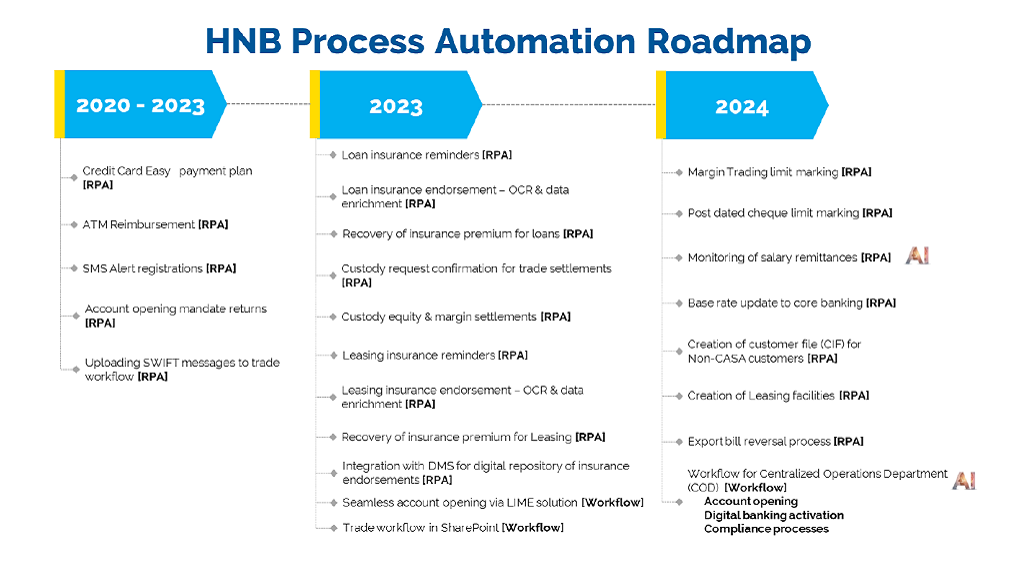ABA Position Paper on HNB’s Adoption of RPA & AI to Reshape its Banking Operations
HNB's Adoption of RPA & AI to Reshape its Banking Operations
II. Objectives
III. How RPA and AI fits in to HNBs Digital Transformation Journey
IV. Insights on adoption and implementation
V. Challenges faced by HNB during RPA implementation
Absence of digital data availability and poor-quality data
Many application forms are still maintained in physical form in the industry and the acceptance of digital signatures is still in its infancy in Sri Lanka. The typically low success rate of Optical Character Recognition (OCR) for physical forms is a critical challenge faced by the banks in Sri Lanka. Currently account opening, fix deposit and credit applications are accepted physically with customer signatures. This has posed challenges in automating these processes end to end using RPA. Furthermore, when automating insurance renewals, the project teams observed challenges in data accuracy which would require data cleansing exercise for successful automation without errors. As a part of the learnings, HNB is now evaluating the quality of data and standardization requirements as a part of the assessment exercise as a proactive measure.
Stakeholders working in silos
RPA was initially purely handled by the IT team. However, the level of engagement and support was low by the business teams due to lack of understanding of RPA and how it can help business teams achieve exponential returns. Due to this challenge, the bank observed significantly lower returns with some projects even taking years to be implemented. A dedicated centralized team was formed in 2021 consisting of Process Excellence, IT roles and the business to drive RPA in the organization. As a result, we have witnessed significant operational efficiencies and much lower implementation timelines by the creation of the said structure.
Need for an RPA governance framework
Another key reason for lower level engagement support by c-suite and c-1 was due to the absence of a strong governance structure and KPIs for process automation. This has led to challenges in establishing key roles amongst the teams for commitment and compliance.
High investment and maintenance of RPA
RPA is a high investment technology solution with front end automation which needs frequent maintenance for uninterrupted operation. Further, it was observed that many other technologies can address similar automation needs using back-end automation. This has posed challenges in automating certain processes. due to reduced ROI
Selection of vendors
The inadvertent selection of vendors using proprietary platforms resulted in many challenges, especially during scaling up as multiple vendors could not collaborate in the development process and the organization became entrenched with one party. There was also an inherent challenge in recruiting people with knowledge about the platform amongst the general workforce, making it harder to carryout internal development and changes.
Absence of frameworks for effective process assessments
Whilst some automation predominantly lends itself to productivity and efficiency improvements, certain processes are associated with regulatory and compliance requirements. The absence of a qualitative benefit analysis model in the initial stage was a constraint when selecting such processes as they typically had lower ROIs. This necessitated the development of a comprehensive RPA selection matrix to allow the inclusion of critical processes which had qualitative benefits without deselecting or reprioritizing them.
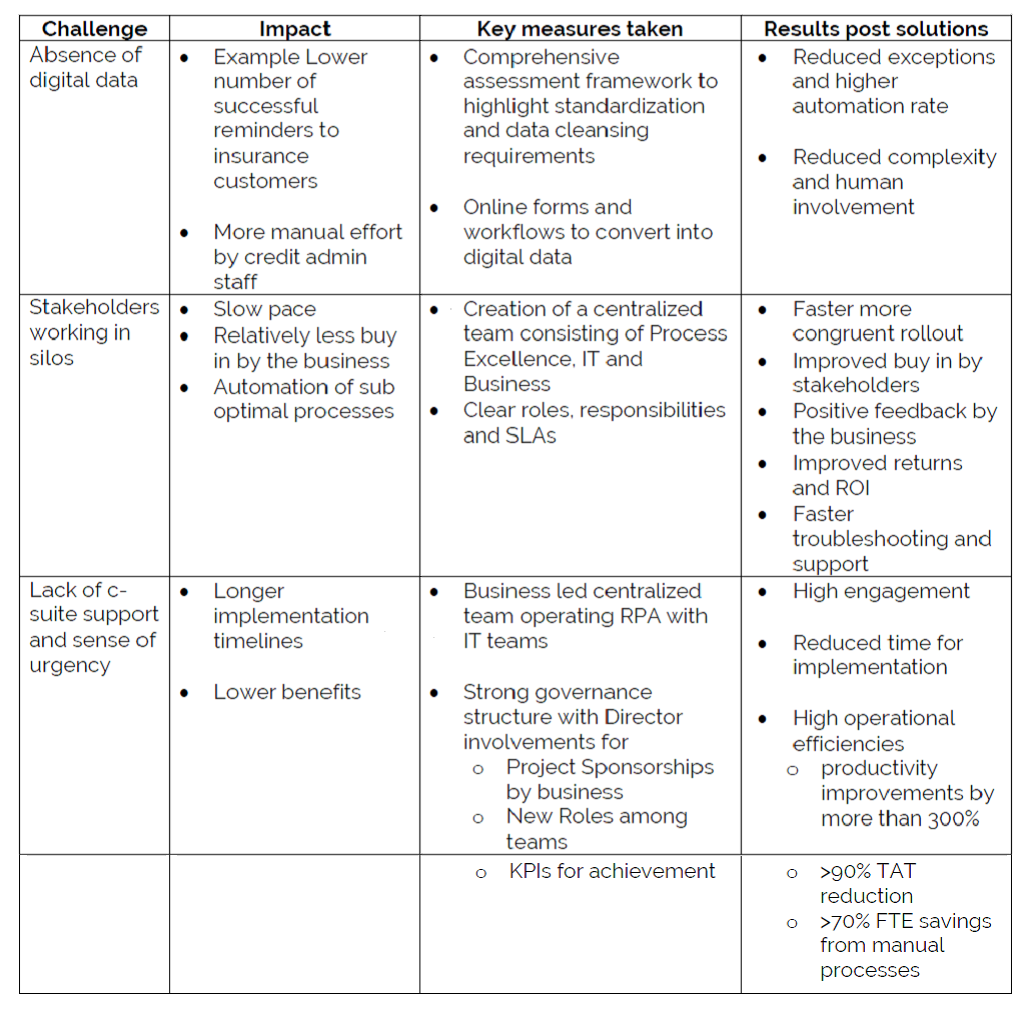
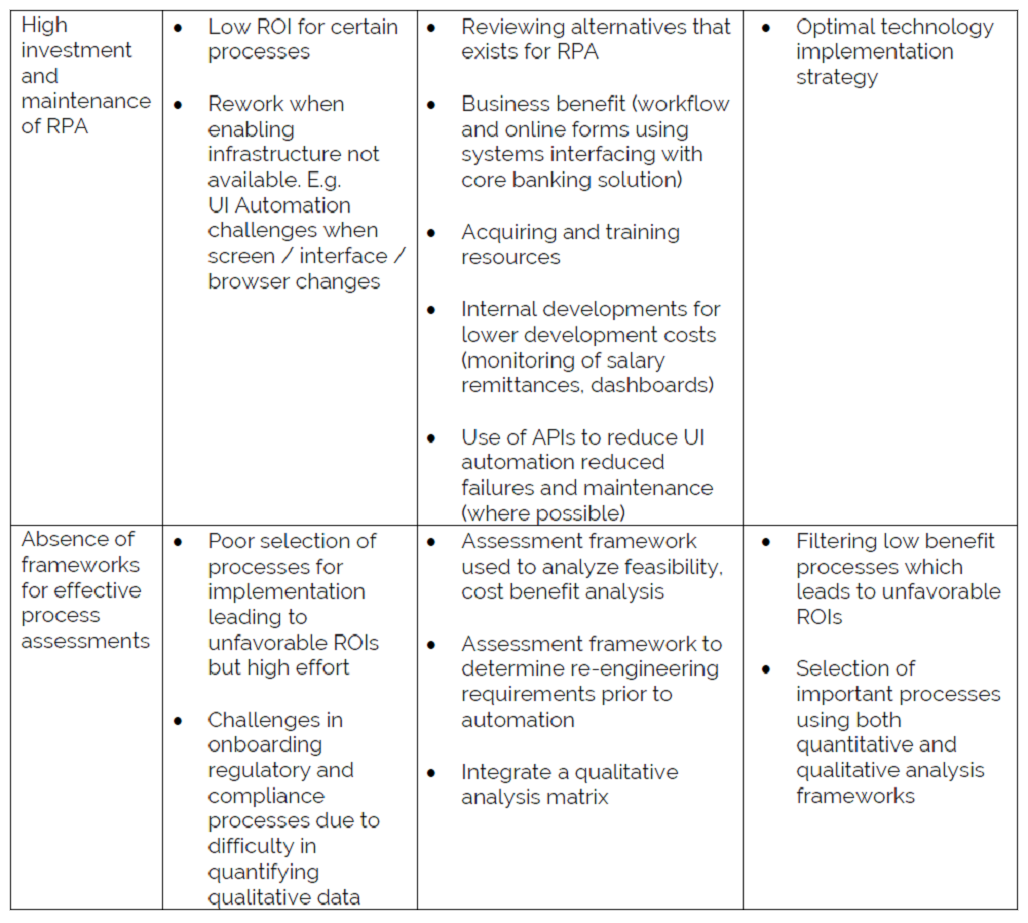
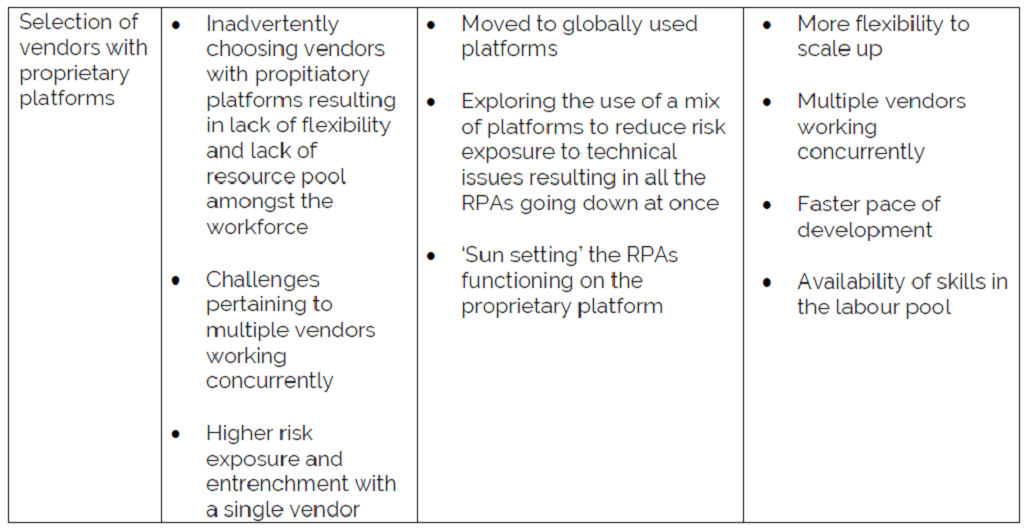
VI. Way forward – Use of Intelligent Automation and AI
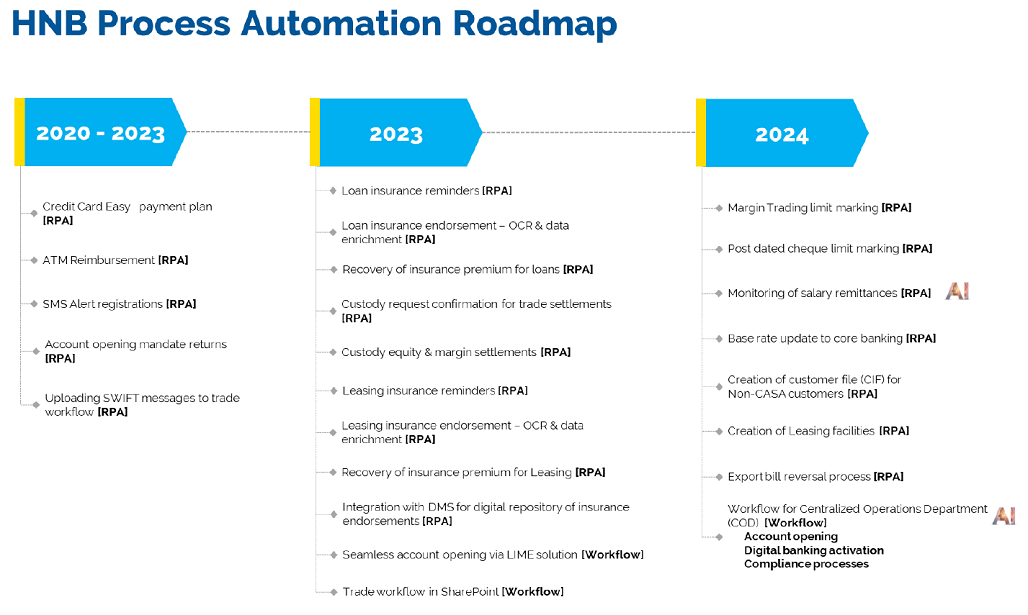

Christopher Thuraisingham & Nuwanka Perera
Hatton National Bank

